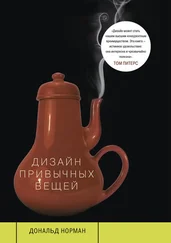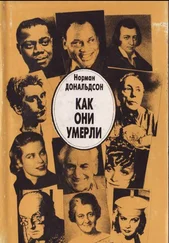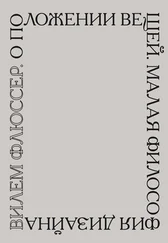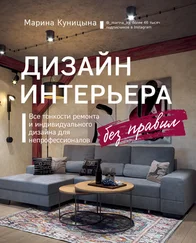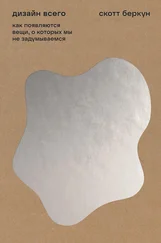С. 86 «Британские исследователи Элиот, МакКолл и Кеннеди полагают…» ( Elliott M.A., McColl V.A., Kennedy J.V. Op. cit. Цит. по: Kennedy J.V. Psychological traffic calming. Proceedings of the 70th Road Safety Congress (2005) [http://www.rospa.com/roadsafety/conferences/congress2005/info/kennedy.pdf]).
С. 87 «Главные причины травм и смерти от несчастных случаев в быту…» (CDC industry research agenda. Department of Health and Human Services, Centers for Disease Control and Prevention (2002) [www.cdc.gov/ncipc/pub-res/research_agenda/Research%20Agenda.pdf]).
С. 87 «…не менее опасны, чем управление автомобилем в пьяном виде» ( Strayer D.L., Drews F.A., Crouch D.J. A comparison of the cell phone driver and the drunk driver // Human Factors. 2006. Vol. 48 (2). P. 381–391).
С. 91 «Возьмем „Кобот“ (сокращение от Collaborative Robot)…» ( Colgate J.E., Wannasuphoprasit W., Peshkin M.A. Cobots: Robots for collaboration with human operators // Proceedings of the International Mechanical Engineering Congress and Exhibition. 1996. DSC–Vol. 58. P. 433–439).
С. 91 «Подобно хорошему учителю, „умные“ машины дополняют человеческий разум, а не пытаются его заменить». Электронное сообщение от Майкла Пешкина от 21 декабря 2001 года. (Публикуется в слегка отредактированном виде.)
С. 93 «Одна из наиболее интересных возможностей…» ( Colgate J.E., Wannasuphoprasit W., Peshkin M.A . Op. cit.). Я немного отредактировал текст, убрав сложную научную терминологию, чтобы он стал более доступным. В оригинале идея «стены» ставится в заслугу Розенбергу, а идея «волшебной мыши» – Келли и Салкудину ( Rosenberg L.B . Virtual fixtures: Perceptual overlays enhance operator performance in telepresence tasks. Stanford, CA, 1994 (неопубликованная диссертация, Stanford University, Department of Mechanical Engineering); Kelley A.J., Salcudean S.E. On the development of a force-feedback mouse and its integration into a graphical user interface // International mechanical engineering congress and exposition / Ed. by C.J. Radcliffe. Chicago: ASME, 1994. Vol. DSC 55–1. P. 287–294).
С. 96 «Водитель 14 часов не мог выехать с круговой развязки». Этот текст – пародия на информационное сообщение, написанное Д. Норманом для первоапрельского выпуска компьютерного издания RISKS Digest, посвященного авариям, ошибками и изъянам в дизайне компьютерных систем.
С. 99 «А сейчас, увы! люди стали орудиями своих орудий» ( Thoreau H.D. Walden: A fully annotated edition / Ed. by J.S. Cramer. New Haven, CT: Yale University Press, 2004).
С. 100 «Кстати, его и самого можно назвать технологом…» ( Petroski H. The pencil: A history of design and circumstance / Ed. by P. Henry. New York: Knopf, 1998).
С. 101 «автомобиль, превратившийся… в „компьютер на колесах“» ( Lohr S . A techie, absolutely, and more: Computer majors adding other skills to land jobs // New York Times. 2005. August 23. C. 1–2).
С. 118 «В свое время я утверждал, что нынешний уровень автоматизации…» ( Norman D.A . The “problem” of automation: Inappropriate feedback and interaction, not “over-automation” // Human factors in hazardous situations / Ed. by D.E. Broadbent, A. Baddeley and J.T. Reason. Oxford: Oxford University Press, 1990. P. 585–593).
С. 119 «…если круиз-контроль дает сбой…» ( Stanton N.A., Young M.S . Vehicle automation and driving performance // Ergonomics. 1998. Vol. 41 (7). P. 1014–1028. Выводы этой работы приводятся по: Marinakos H., Sheridan Т.В., Multer J . Effects of supervisory train control technology on operator attention. Washington, DC: U.S. Department of Transportation, Federal Railroad Administration, 2005 [http://www.fra.dot.gov/downloads/rrdev/ord0410.pdf]).
С. 120 «…здравый смысл подсказывал, что в результате они заедут в реку…» ( Bruxelles S. de . Sat-Nav Dunks Dozy Drivers in Deep Water // The Times. 2006. April 20).
С. 120 «А круизный лайнер Royal Majesty…» ( Degani A . The Grounding of the Royal Majesty (Chapter 8) // Taming HAL: Designing Interfaces beyond 2001 / Ed. by A. Degani. New York: Palgrave Macmillan, 2004 (For the National Transportation Safety Board\'s report) [www.ntsb.gov/publictn/1997/MAR9701.pdf]).
С. 125 «Один из гостей-журналистов так описал этот процесс…» (American Association for the Advancement of Science: World\'s “smartest” house created by CU-Boulder team (1998) [http://dx.doi.org/10.1787/518742334033]).
С. 126 «Вот что думает сам Мозер о пределах…» ( Mozer M.С. Lessons from an adaptive house // Smart environments: Technologies, protocols, and applications / Ed. by D. Cook and R. Das. Hoboken, NJ: J. Wiley & Sons, 2005. P. 273–294). Цитата приводится с разрешения издательства John Wiley & Sons.
С. 128 «Группа ученых из научно-исследовательского центра Microsoft в Кембридже…» ( Taylor A. et al . Homes that make us smart // Personal and Ubiquitous Computing. 2005. Vol. 11 (5). P. 383–394).
С. 134 «В „знающем“ доме, созданном специалистами из Технологического института штата Джорджия…» Информация получена на сайте Технологического института (Джорджия) «Компьютеры в быту» [https://research.cc.gatech.edu/ecl/projects/cooks-collage].
С. 136 «Автоматизация отлично выглядит на бумаге…» ( Johnson K. Rube Goldberg finally leaves Denver airport // New York Times. 2005. August 27. P. 1).
С. 137 «Шошана Зубофф, специалист по социальной психологии…» ( Zuboff S. In the age of the smart machine: The future of work and power. New York: Basic Books, 1988).
С. 143 «Я на совещании в Чили, в Винья-дель-Мар…» Электронное сообщение от Джонатана Грудина из Microsoft, полученное мною в мае 2007 года. Цитируется с разрешения автора.
С. 152 «Марк Вайзер и Джон Сили Браун, ученые из Исследовательского центра Xerox (PARC) в Пало-Альто, назвали это…» ( Weiser M., Brown J.S. The coming age of calm technology // Beyond calculation: The next fifty years of computing / Ed. by P.J. Denning and R.M. Metcalfe. New York: Springer-Verlag, 1997).
Читать дальше
Конец ознакомительного отрывка
Купить книгу

